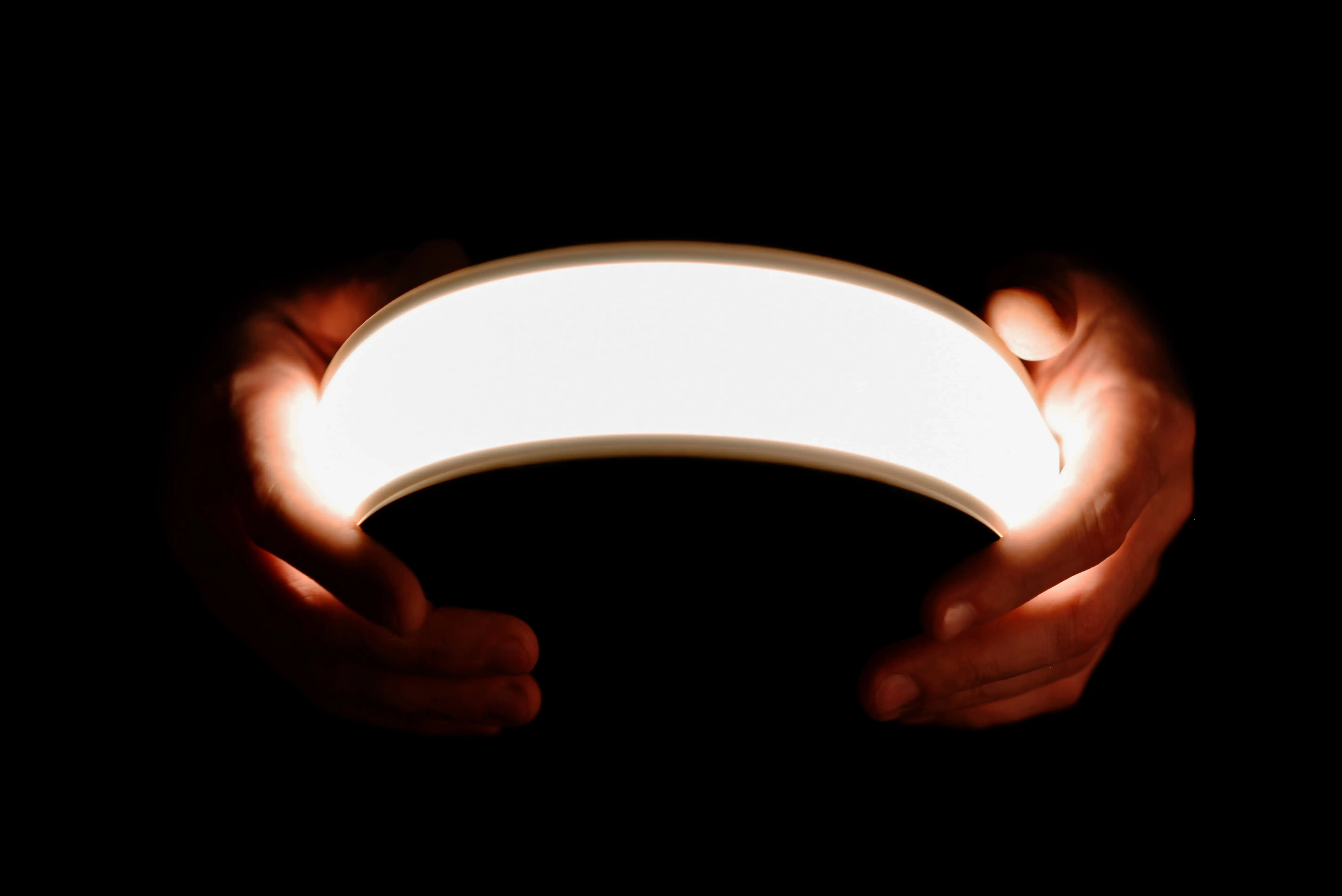OLED Lighting: Why It Never Took Off in Built Environment

Lighting technology shapes commercial spaces, but not every idea stands the test of time. Organic Light-Emitting Diode (OLED) lighting arrived with a bold vision: thin, flexible luminaires offering soft, even illumination. Although a very attractive proposition, it yet remains a rarity in office buildings or commercial properties. Why hasn’t OLED made its mark?
What is OLED Lighting?
OLED, or Organic Light-Emitting Diode, uses organic compounds to produce light when an electric current is applied. Unlike the LEDs, which rely on inorganic materials, OLED creates slim, flexible luminaires with a uniform glow. First developed in the 1980s by Eastman Kodak and adapted for lighting in the 2000s by the likes of Philips and LG, it promised to revolutionise design-focused applications. However, its impact on commercial lighting has been far less impressive.
Technical Aspects
OLED works by passing electricity through organic layers between two electrodes, generating a soft, diffused light. OLED fittings can be incredibly thin and even bendable, offering unique design possibilities. But beneath this appeal lies technical drawbacks that have held it back.
- Efficacy: OLED currently achieves low lm/W levels for warm white light, compared to LEDs, which commonly exceed 100 lm/W. This lower efficacy restricts its suitability for energy-intensive commercial applications in the UK due to Part L regulations.
- Rated Life: OLED panels last approximately 30,000 hours (L70, to 70% initial output), while LEDs maintain 50,000 hours, reducing maintenance in high-output settings.
- Cost: Production costs make OLED several times more expensive than LED, which is a major barrier for large projects.
- Durability: Its fragile properties are prone to damage during transport and installation, unlike LED’s tougher build.
- Drivers and Standardisation: OLED often utilises LED drivers, which lack optimisation for its specific voltage and current requirements, resulting in efficiency losses of up to 50%. Additionally, the absence of standardised sizes, connectors, or driver protocols complicates integration and scalability.
Pros and Cons
Here’s a quick snapshot of OLED’s strengths and weaknesses:
| Pros | Cons |
|---|---|
| Flexible, thin panels | Much higher cost than LED |
| Soft, high-quality light | Lower energy efficiency |
| Ultra-slim design | Shorter lifespan at high brightness |
| Tunable colour temperatures | Fragile and hard to handle |
| Limited drivers and standards |
Conclusion
OLED lighting captivated the industry with its design potential, but its higher costs, lower efficiency, and practical drawbacks have kept it on the sidelines of commercial buildings. LED remains the go-to choice, delivering the reliability and value professionals demand. OLED’s story is a reminder that innovation must meet the real-world needs of the sector to truly take hold.


